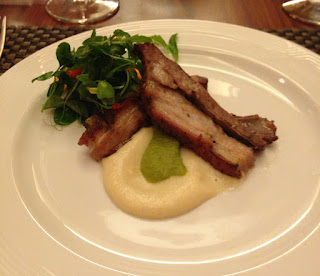Photojournalist Harry Benson didn’t originally want to work with the Beatles.
When the London Daily Express called him late one night in 1964 telling him he was assigned to fly out of the country with the rock group the next morning, Benson said no. He wanted to go to Africa and cover hard news. But when he heard them play at a local joint in Paris the next day, he had a change of heart.
“I leave the hall to go back to my car to get another piece of equipment, and I’m coming back and the Beatles are starting,” says Benson. “I hear ‘Close your eyes and I’ll kiss you.’ I think, God, I’m on the right story. This is the story. They were terrific. You could feel Beatlemania breaking out.”
Benson traveled with the Beatles on and off for two years, capturing intimate, behind-the-scenes photographs of the group during their prime in America. His new book, The Beatles: On the Road 1964-1966, showcases these photos and celebrates the 50th anniversary of the Beatles’ first U.S. tour.
The Contessa Gallery on Cedar Road will be hosting an exhibition of Benson’s work, Lens of a Legend: Harry Benson Photographs May 31-July 7. While there will be a heavy emphasis on the Beatles, photographs of Frank Sinatra, Andy Warhol and Jack Nicholson will also be hung. Benson will be at the gallery opening Friday and Saturday to talk about his work from 6-9 p.m. He gave us a preview of some of his favorites.
Right after the group was told they were the No. 1 band in America, and they were going to New York City to appear on The Ed Sullivan Show
“Paul was drinking with his back turned to the door, and John slips out and comes back in with a pillow and hits him in the back of the head with it," Benson says. "And that was the pillow fight. It went on for about 25 minutes. I’ve never seen anything like that from a rock group.”
“Paul was drinking with his back turned to the door, and John slips out and comes back in with a pillow and hits him in the back of the head with it," Benson says. "And that was the pillow fight. It went on for about 25 minutes. I’ve never seen anything like that from a rock group.”
Arrival in New York City on Feb. 7, 1964
“It was only just a few months after Jack Kennedy’s death, and I think the Beatles helped to give America a big shot in the arm. They cheered it up a lot. Because you could see Beatlemania everywhere, hear people talking about it, newspaper people came from all over America.”
“It was only just a few months after Jack Kennedy’s death, and I think the Beatles helped to give America a big shot in the arm. They cheered it up a lot. Because you could see Beatlemania everywhere, hear people talking about it, newspaper people came from all over America.”
Meeting Muhammad Ali in Miami Beach in 1964
“He completely dwarfed them. He told them to do this. He completely ran it; he ran the show. And afterwards John said, ‘He made us look like bloody fools, and it was your fault Benson,’ and the Beatles were pretty upset. They didn’t talk to me on the way back, because they were always the funny ones and they had control of things.”
“He completely dwarfed them. He told them to do this. He completely ran it; he ran the show. And afterwards John said, ‘He made us look like bloody fools, and it was your fault Benson,’ and the Beatles were pretty upset. They didn’t talk to me on the way back, because they were always the funny ones and they had control of things.”

At the Harrow School in England, 1964
“I would have liked to photograph [Winston] Churchill during the war, when he was at his best. ... When I photographed Churchill, it was about two years before he died, and what makes the picture is he’s leaving his old school. A bunch of students are cheering him, so it gives the picture power because of the energy of the youth and the old man who had obviously done so much.”
Jack Nicholson is included in the gallery because of the Indians hat, but Benson says there’s also an odd mystery with this photograph. “Look at it very closely," he teases. "It’s very interesting.”


























